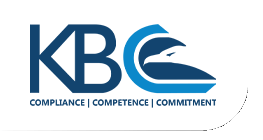By Sian Thurtell, Chief Operating Officer at KBC Health & Safety
It is undeniable that there is a strong correlation between safety leadership, workplace culture and organisational performance. This makes it critical for companies to inspire a culture in which employees feel safe and engaged, in order to create high-performance, productive teams. Where does such a culture start? With leadership. The actions and mindsets of leaders in any company filter down to all levels in the organisation to form the building blocks of a specific culture or value system. Where the actions and mindsets of leaders are not aligned to the organisational vision, this can have an adverse impact on safety and productivity. As such, I firmly believe that the first place to start when creating a cultural shift toward safety is with leadership.
Inspiring change from the top, down
For this reason, we have developed our Safety Leadership training intervention in a manner that proactively addresses the necessity of leadership alignment to the organisation’s strategic intent. This is important to ensure that leadership is fully cognisant of what it takes to build the safety-focused culture that is imperative to positively impact the performance and productivity of employees at all levels.
Leading safety
In such an exercise, the book “Leading with Safety” by Thomas Krause is an indispensable guide that redefines organisational safety as an activity that leads other performance areas, which in turn requires that organisational safety be inspired from the top down. Krause poses the question, “What does it take to be a great safety leader?” and identifies seven key behaviours that leadership needs to embody in order to establish the type of safety-focused culture that results in performance excellence.
The seven behaviours required from leadership are:
- Vision: An effective leader can visualise what performance excellence in safety would look like and convey that vision in a compelling way throughout the organisation.
- Credibility: An effective leader displays integrity and is open to admitting their own mistakes. They will encourage direct reports that support the interest of the group, enabling others to deliver honest information about safety – even if it is not favourable.
- Action orientated: An effective leader is proactive (as opposed to reactive) in addressing safety issues. This individual gives timely responses to safety concerns that are well thought out. They exhibit a sense of personal urgency and put energy into achieving safety results.
- Collaboration: An effective leader works well with others, facilitates cooperation and collaboration in safety by actively seeking input from team members on issues that affect them. This includes encouraging others to implement their decisions and solutions for improving safety.
- Communication: This individual encourages others to provide honest and complete information about safety, even if the information is unlikely to be well received. This leader keeps people informed about the overall goal of safety (zero harm), and communicates efficiently and regularly up, down and across the organisation.
- Recognition and feedback: Such an individual is effective in providing feedback and recognising people for their efforts. This person publicly acknowledges the contributions of others, using praise more often than criticism.
- Accountability: An effective leader delivers a fair appraisal of safety efforts and results; clearly identifies people’s roles in the safety effort; and encourages a sense of individual responsibility for the collective level of safety in their operational unit.
Sustainable safety requires top-down commitment and action
Without being driven from the top, safety initiatives often fizzle out. This is because everyone looks up to what the leaders are doing in the workplace. They are the ones who set the standards, so if they are not aligned with what the business is trying to achieve on the ground, it is never going to be sustainable in the long term.
Personal responsibility for collective safety
Through our Safety Leadership training, we encourage leadership to identify gaps within their leadership styles or behaviours in order to come up with a personal and organisational game plan that focuses on addressing these gaps. Once this is done, it is necessary for the company’s leaders to collectively agree on and commit to actionable items that will result in clear objectives to achieving a safety culture in their organisation, through visible leadership. Following this leadership training, our approach is always to recommend that Supervisory-level and Worker-level employees are engaged through a similar intervention pitched to their level and role in the organisation. This will ensure that all levels are aligned and understand the drive to create a safety culture that makes a difference in a way that is sustainable and meaningful.



